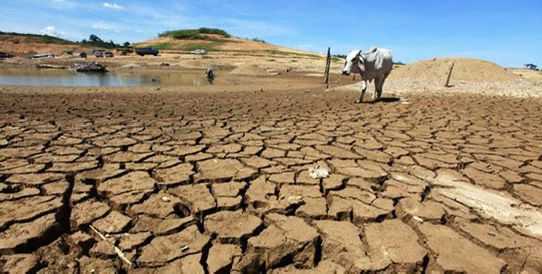In the heart of West Africa, Ghana grapples with a silent crisis, one that stealthily infiltrates communities, leaving a trail of health repercussions in its wake.
Recent scientific observations and meticulous measurements have unearthed a disconcerting reality: Ghana’s weather is becoming hotter, setting the stage for a complex interplay between climate change and public health.
Emmanuel Samani’s penetrating report delves into the labyrinth of factors driving this trend and unravels the potential ramifications for both urban and rural dwellers.
The Emerging Patterns:
Drawing from data meticulously gathered by the Ghana Meteorological Agency, a troubling narrative emerges. Ghana finds itself in the throes of a climatic metamorphosis, veering towards warmer temperatures, a departure from its historical climate norms.
Yet, amidst this temperature surge, rainfall patterns remain capricious, refusing to adhere to predictable trends. Fluctuations in rainfall quantities year on year confound any attempt to discern a definitive pattern, leaving Ghanaian communities at the mercy of a fickle climate.
The Culprits:
Behind the curtain of Ghana’s changing climate lie a myriad of perpetrators. Human-induced climate change stands as the primary antagonist, fueled by the relentless combustion of fossil fuels, rampant deforestation, and unsustainable agricultural practices. As the Earth’s temperature steadily ascends, the repercussions reverberate across Ghana’s landscapes, ushering in a cascade of consequences.
Urbanization exacerbates the situation, casting a sweltering cloak over burgeoning cities, courtesy of the notorious “urban heat island” effect. With each passing day, concrete jungles absorb and radiate heat, transforming urban landscapes into veritable furnaces.
The Human Toll:
But it is the human toll that strikes the most poignant chord. Climate-related disasters, from catastrophic floods to crippling droughts, amplify the vulnerability of Ghana’s populace. Floodwaters, tainted with the residue of devastation, contaminate precious water sources, ushering in the specter of waterborne diseases like cholera and typhoid fever.
Yet, the insidious reach of climate change extends far beyond the realm of floods and droughts. Vector-borne diseases, epitomized by the relentless onslaught of malaria and dengue fever, exact a heavy toll on Ghana’s health landscape. Rising temperatures furnish the perfect breeding grounds for disease vectors, propelling infection rates skyward and ensnaring vulnerable populations in their lethal embrace.
A Glimmer of Hope:
Amidst the gloom, a silver lining emerges. Ghana, undeterred by the encroaching shadows of climate change, charts a course of proactive adaptation and resilience-building in the realm of public health. From the inception of early warning systems for disease outbreaks to the fortification of healthcare facilities against climatic onslaughts, innovative initiatives take root, offering a glimmer of hope in the face of adversity.
The Call to Action:
As the curtain falls on Ghana’s saga of climate-induced health crisis, a resounding call to action reverberates across the nation. Urgent measures are imperative to shield vulnerable communities from the merciless onslaught of environmental upheaval. Raising awareness, championing adaptation strategies, and fostering cross-sectoral collaboration emerge as potent weapons in the arsenal against climate change’s insidious grip.
In the labyrinthine nexus of climate change and public health, Ghana stands as a microcosm of the global struggle against an existential threat. As temperatures soar and diseases proliferate, the imperative for concerted action grows ever more pressing.
Through collective resolve and unwavering determination, Ghana endeavors to carve a path towards a future where health and resilience reign supreme amidst the tempests of climate change.


